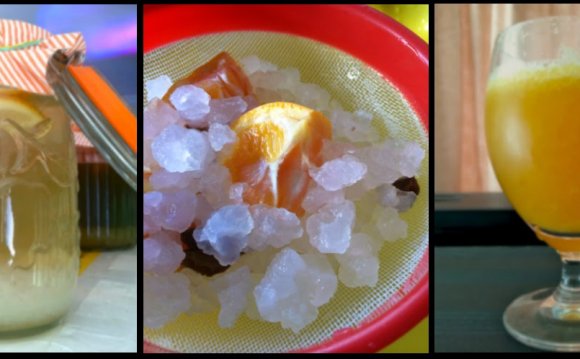
Milk kefir (pronounced kee-fur) is produced by kefir 'grains'; they look like white mulberries or little cauliflower florettes. The grains ferment milk at room temperature into a wonderfully delicious probiotic yogurt type drink. The fermentation process takes about twenty-four hours after which you can change your grains over into fresh milk to repeat the ferment; or put them in the fridge to keep them dormant.
Milk kefir is more readily digestible, in comparison to yogurt. This is because milk kefir curds breaks down into into very small particles which facilitates widespread action in the gut. Yogurt tends to hold together or break into lumps.
Milk kefir contains beneficial bacteria and yeast, many essential vitamins, minerals, amino acids and enzymes. It is high is calcium, phosphorous, magnesium, B2 and B12, vitamin K, vitamin A and Tryptophan.
Kefir has many health benefits. It is antibiotic and antifungal. It has a history of use in the treatment of a wide range of conditions from allergies, osteoporosis, illness recuperation and candidiasis. It is a physiologically active food that gives health benefits beyond basic nutrition.
Milk kefir is generally acceptable for people who are lactose intolerant due to the fact that the milk is pre-digested during the fermentation process.
The regular use of milk kefir will give you a healthier digestive system which is one of the absolute foundations of optimum health and longevity.
You will receive approximately 30 grams of grains which will ferment approximately 2 cups of milk. As you ferment your kefir culture the grains will grow and multiply and provide you with an endless supply of kefir. The growth in the grains also allows you to experiment with other milk ferments like coconut milk and nut milks.
I read somewhere a person describing it as an 'organoleptic' food. Meaning (to be honest I had to look it up) 'an aspect of food as experienced by the senses, including taste, smell, sight and touch'. It is a good description.
And you can make cheese out of it as well.
Milk kefir grains are a complex mixture of bacteria and yeasts which are held together in a polysaccharide cellular structure. It contains an extensive range of lactic bacteria and bacteria. The number ranges up to 50 but they would not all be present in a single culure.
Their presence depends on a range of factors including the original kefir culture, type of milk, temperature of the ferment and the season.
Some of the major active ingredients include:
Lactobacillus bacteria
Lactic Acid Bacteria
Lactobacillus is a type of bacteria. It has around 30 different species and the main role is the conversion of lactose and other sugars to lactic acid.
Lactobacillus bacteria are present in the gastrointestinal and urinary tracts and the vagina. They are 'friendly' bacteria that work to crowd out the 'unfriendly' bacteria.

 Saturated fat is fat that consists of triglycerides containing only saturated fatty acids. Saturated fatty acids have no double bonds between the individual carbon atoms of the fatty acid chain. That is, the chain of carbon atoms is fully "saturated" with hydrogen...
Saturated fat is fat that consists of triglycerides containing only saturated fatty acids. Saturated fatty acids have no double bonds between the individual carbon atoms of the fatty acid chain. That is, the chain of carbon atoms is fully "saturated" with hydrogen...








